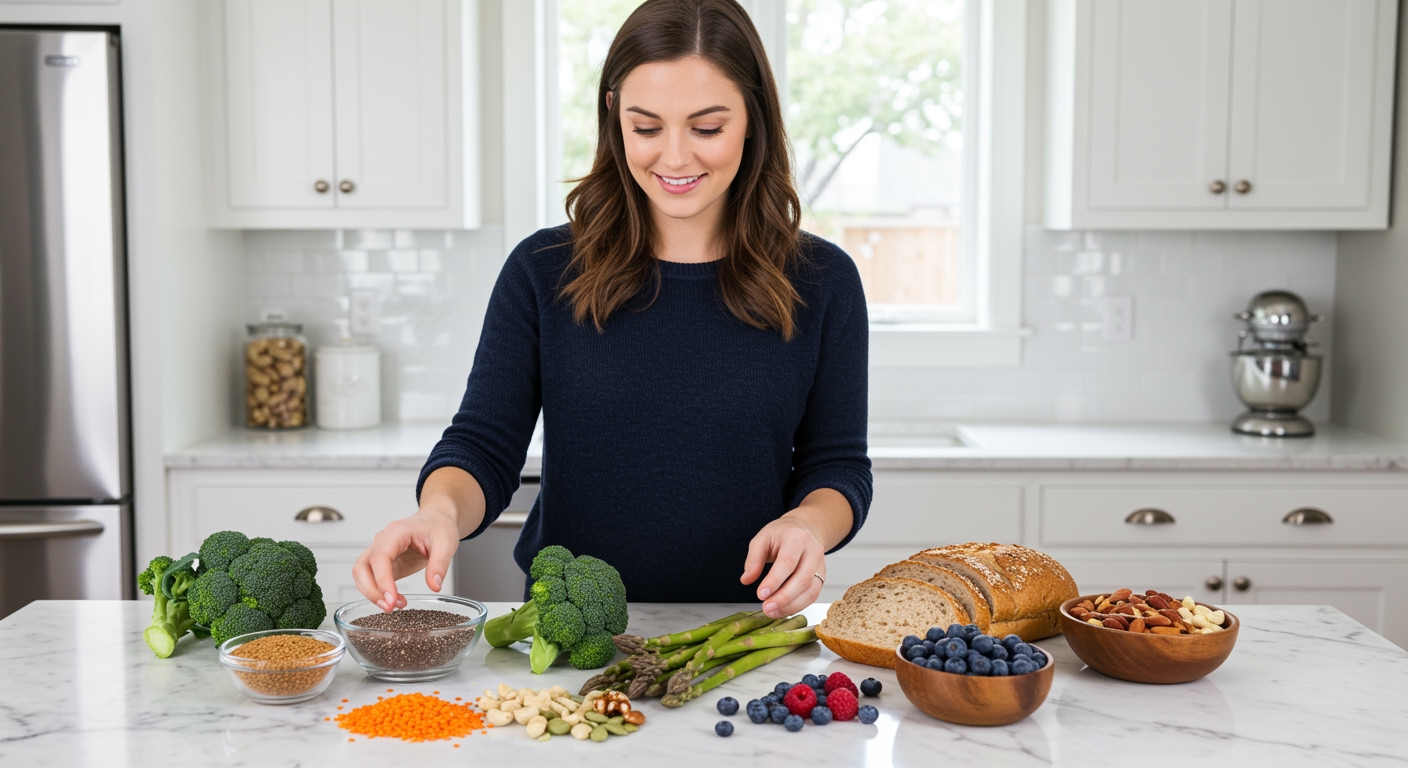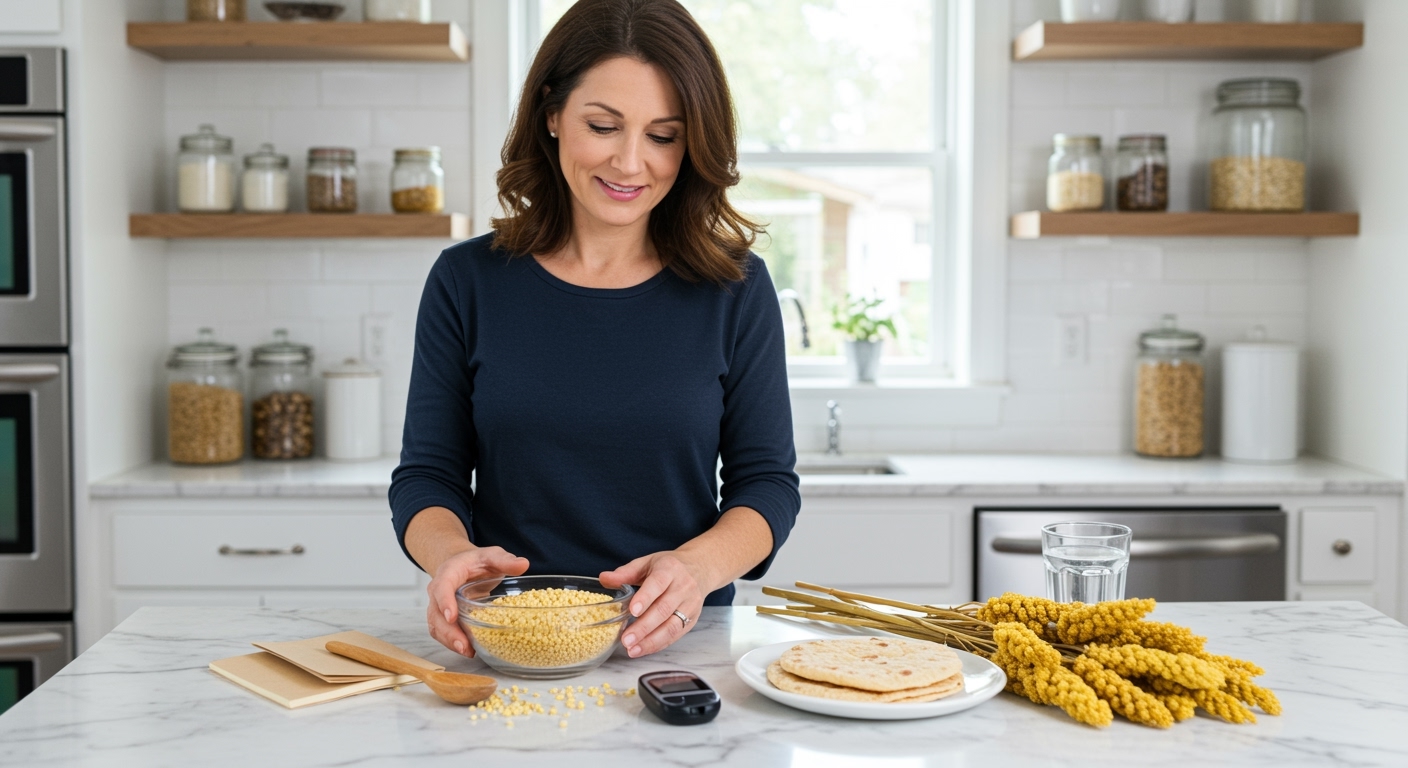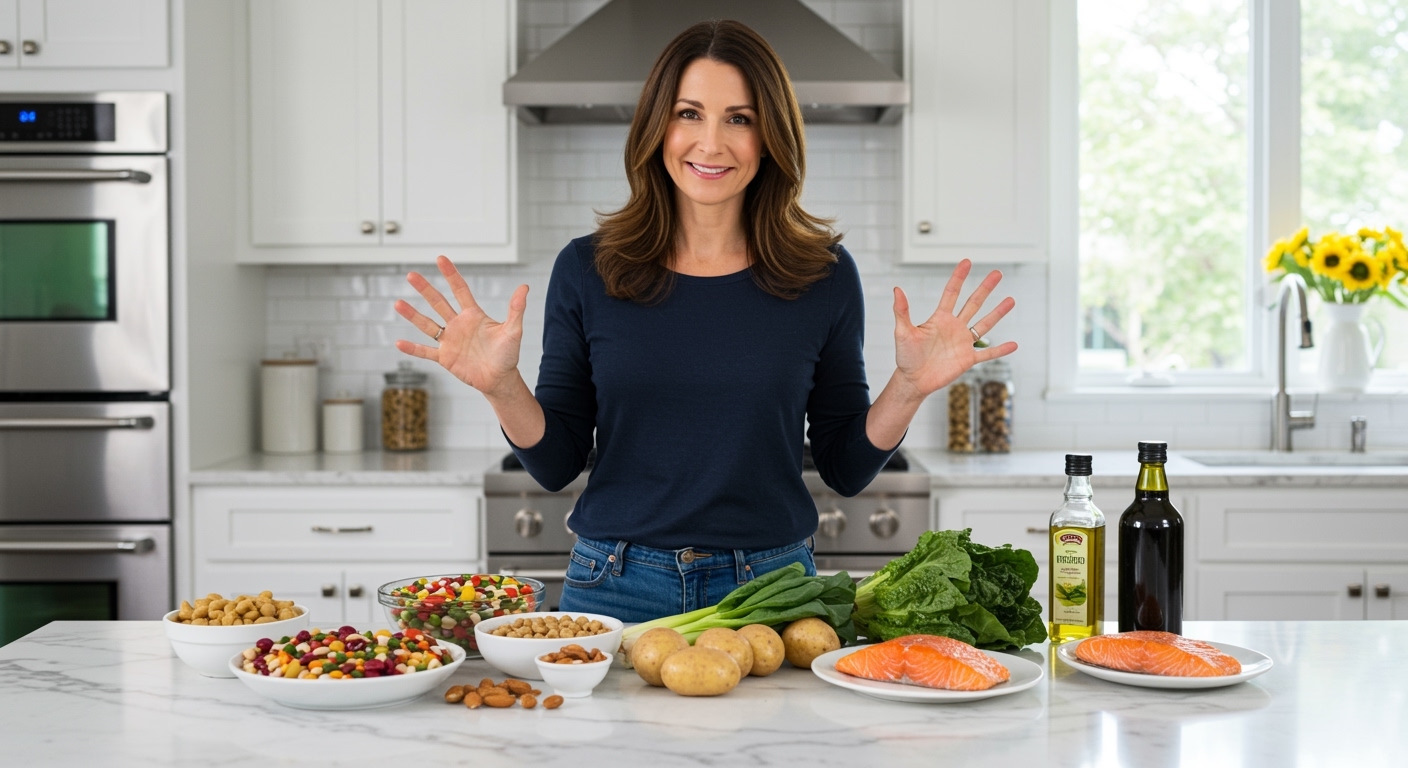✪ Key Highlight: TikTok’s fibremaxxing trend promotes eating more fiber, finally aligning social media wellness advice with actual nutrition science.
Introduction
Social media wellness trends usually make nutrition experts cringe, but something different is happening with the latest TikTok phenomenon called fibremaxxing.
For the first time in years, a viral health trend actually promotes something that nutrition professionals have been recommending all along – eating more fiber.
Hi, I’m Abdur, your nutrition coach and today I’m going to analyze this fibremaxxing trend that has nutrition experts genuinely excited about social media wellness advice.
What exactly is fibremaxxing?
Fibremaxxing means intentionally packing your meals with as much fiber as possible through fruits, vegetables, whole grains, nuts, and seeds.
The trend gained massive momentum when 25-year-old TikTok creator Pamela Corral started sharing her high-fiber chia seed puddings that quickly went viral.
Her simple message “Fiber is super cool – I think more people should be eating fiber” resonated with thousands of viewers who were eager to try something new.
The hashtag #fibremaxxing has gathered thousands of views as influencers share high-fiber meal plans like overnight oats packed with chia seeds, lentil salads, and veggie stir-fries.
People are sharing recipes, gut-health tips, and even before-and-after stories about how more fiber helped them with bloating and weight changes.
Unlike extreme online trends that promote dangerous restrictions, fibremaxxing encourages eating more real food rather than eliminating entire food groups.
✪ Fact: Most adults only get about 20 grams of fiber daily when they need 25-38 grams according to health guidelines.
Why are nutrition experts actually supporting this trend?
Nutrition experts are excited because fibremaxxing addresses a genuine nutritional deficiency that affects most adults worldwide.
The recommended daily fiber intake is 25 grams for women and 38 grams for men, but the average adult only gets about 20 grams per day.
This fiber gap creates real health problems including digestive issues, elevated cholesterol levels, and unstable blood sugar.
Research from UCLA shows that fiber feeds the beneficial bacteria in your gut, supports regular bowel movements, and lowers the risk of constipation and colon cancer.
The US Centers for Disease Control and Prevention explains that soluble fiber can lower LDL (bad) cholesterol and help keep blood sugar stable.
Clinical dietitian Malvika Fulwani notes that “Fibre slows digestion, helping to stabilise blood sugar levels and maintain steady energy — especially beneficial for those with insulin resistance, PCOS, or chronic fatigue.”
✪ Pro Tip: Start your fiber increase gradually to avoid digestive discomfort while your gut bacteria adjust to the changes.
How does fibremaxxing help with weight management?
Weight management is one of the biggest reasons people are trying fibremaxxing, and the science supports their enthusiasm.
Fiber increases the feeling of fullness and satiety, which naturally helps prevent overeating and makes appetite control much easier.
When you eat high-fiber foods, they expand in your stomach and slow down digestion, sending satiety signals to your brain more effectively.
This mechanism explains why many people who start eating more fiber notice changes in their weight and energy levels without deliberately restricting calories.
Fiber also requires more energy to digest compared to refined carbohydrates, which means your body burns more calories during the digestion process.
The slower digestion of fiber-rich foods helps maintain steady blood sugar levels, preventing the energy crashes that often lead to overeating.
✪ Note: Fiber works best for weight management when combined with adequate water intake and regular physical activity.
Why is fibremaxxing replacing the protein obsession?
The rise of fibremaxxing comes after years of social media focus on hitting protein goals through supplements and high-protein diets.
Protein became popular because it builds muscle and helps people feel full, but most people already get enough protein from their regular diet.
Experts warn that too much protein, especially from supplements, can sometimes put stress on the kidneys, and extra amounts often provide no additional benefits.
Dr Partap Chauhan notes that “The shift from protein obsession to fiber awareness is a welcome one, but the real challenge lies in personalised application.”
Unlike protein supplements that can be expensive and unnecessary, fiber-rich foods are typically affordable whole foods that provide multiple nutrients.
Fiber addresses a genuine nutritional gap that affects digestive health, heart health, and blood sugar control simultaneously.
✪ Fact: Your body type, digestion, and daily routine should guide your fiber intake, not just following online trends blindly.
What are the potential risks of fibremaxxing?
While eating more fiber is generally safe for healthy people, sudden increases can cause digestive discomfort including bloating, gas, and cramps.
The CDC recommends adults eat between 22 and 34 grams of fiber per day, but experts warn against dramatic overnight changes to your diet.
Gradually increasing fiber intake while drinking plenty of water helps your digestive system adjust without uncomfortable side effects.
Dietician Debalina Dutta points out that while eating more fiber is safe for most people, it may not be suitable for everyone with certain conditions.
People with Irritable Bowel Syndrome (IBS), Crohn’s disease, Ulcerative Colitis, or bowel obstruction should be careful with high-fiber diets.
These individuals may need to work with healthcare providers to determine appropriate fiber intake levels that support their specific health needs.
✪ Pro Tip: If you have digestive conditions, consult your healthcare provider before dramatically increasing your fiber intake.
The Bottom Line
Fibremaxxing represents a rare social media trend that actually encourages a healthy habit most people desperately need in their daily lives.
“When social media finally promotes real nutrition instead of quick fixes, we all win – but remember that sustainable health comes from consistent daily choices, not viral trends.”
I would love to hear your thoughts about fibremaxxing and whether you plan to incorporate more fiber-rich foods into your daily routine – please share your questions or experiences in the comment section below.
References
At NutritionCrown, we use quality and credible sources to ensure our content is accurate and trustworthy. Below are the sources referenced in creating this article:
- Euronews Health: Fibremaxxing: Why nutrition experts can actually get behind TikTok’s latest wellness trend
- Firstpost Health: Fibremaxxing diet wellness trend
- The Independent: What is fibermaxxing TikTok trend gut health diet
- Business Standard: Protein vs fibre goals fibremaxxing trends diet tips from experts





